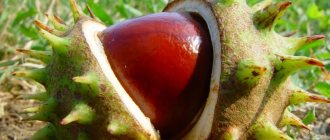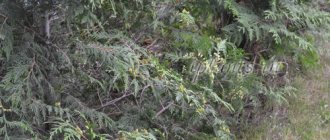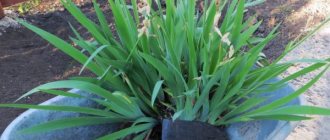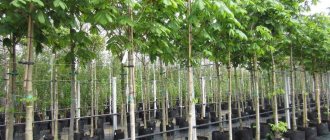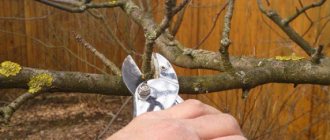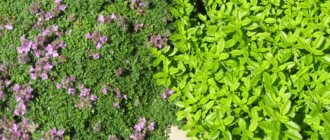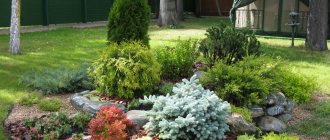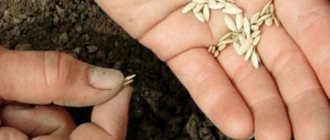- July 11, 2019
- Trees and shrubs
- KatrinGlamour
Growing chestnuts from walnuts is quite a fascinating activity that anyone can do. At home, you can easily grow an ornamental plant or a specimen that will bear fruit. True, in the process it is very important to take into account the characteristics of the tree, its planting technology and the rules for subsequent care.
Knowing how to grow chestnuts, you can easily cope with this task and will probably want to get a few more specimens planted with your own hands.
Popular varieties
Chestnut has many features, the main one of which is rapid growth in a favorable environment. In addition, the tree produces nuts until a very old age, suitable for growing new specimens.
Today more than 30 varieties of this plant are known. But you need to understand that not all types of chestnut are worth planting at home. For growing yourself, you can choose only a few varieties.
- Japanese. Famous for its growth rate. Just three years after planting, this chestnut tree begins to bear fruit, producing large edible fruits.
- Gorodchaty. Among the varieties of this tree you will not find shrubs. The crenate chestnut has a powerful trunk, which reaches 1-1.5 meters in girth.
- Chinese is the softest. Representatives of this species grow up to 15 meters in height. They have beautiful small foliage and bear edible fruit.
- American. It is famous for its resistance to temperature changes and adverse weather. Mature trees can reach 28-30 meters in height. Varieties adapted to our climate bear large, sweet fruits.
- Short. This species is represented by trees up to 12-15 meters tall with a round crown and small shrubs reaching a maximum of 2 meters. Low-growing chestnuts are famous for their unpretentiousness to the soil. They are able to grow successfully even with a lack of moisture.
- Sowing. A long-lived tree that can live for more than half a century. Seed chestnuts grow up to 35-37 meters in height. Despite the lack of exquisite taste, the fruits of this plant are also edible.
Difficulties
Chestnut, like other trees, has a lot of pests - rodents, beetles, caterpillars. Common diseases that can prevent a healthy tree from growing include:
- chestnut moth;
- wood mite;
- powdery mildew;
- perforated spotting;
- various viral and fungal diseases that affect the root system.
As a preventative measure, it is recommended to spray young trees with various compounds 2 times a month.
Growing chestnuts at home indoors or in a summer cottage is not at all difficult. True, this is a long process that will take about ten years.
Choosing nuts for planting
How to grow chestnut? The first step is to get the nuts that you will use for planting.
- You only need to collect the fruits from the ground, since those nuts that are still growing on the tree are not suitable for planting. The most suitable time for searching for chestnuts is considered to be October or September, depending on the weather and climate.
- Nuts need to be carefully inspected. They should be smooth and even, without any roughness or bumps.
- You need to choose dark brown glossy nuts. This shade indicates the ripening of the fruit and the absence of any diseases.
- Collect as many nuts as possible. Keep in mind that not all fruits can sprout.
Preparation
Before planting the collected nuts, they should be properly prepared. This is a very important stage, on which the success of chestnut cultivation will largely depend.
- First of all, the planting material must be kept in damp soil or sand. Before this, the soil must undergo heat treatment for disinfection. To do this, it is convenient to use an oven, which kills any bacteria and fungi. Disinfection is mandatory, especially for sand, in which pathogenic microorganisms like to settle. It is best to carry out heat treatment in advance, since the soil still needs time to restore its beneficial characteristics, including fertility.
- The container with soil in which the nuts are planted should be placed in a cool room, such as a basement, cellar or underground. If you are growing chestnuts in an apartment, you can put the seedlings in the refrigerator. This promotes growth and greatly increases the chances of germination of the material. If you are going to plant chestnuts in the spring, then the nuts should be kept in the cold all winter. At the same time, do not forget to periodically moisten the soil.
- To plant chestnut nuts, it is advisable to use self-prepared soil. To do this, you need to mix humus and forest soil in equal proportions. It is advisable to add a little dolomite flour to the mixture. You can simply mix sand with moss. Nuts should be kept in this soil for 4-5 months before planting in open soil.
- Immediately before planting, you need to soften the shells of the fruit. Otherwise, the chestnut most likely will not germinate. Nuts should be placed in a container with clean water. The liquid will need to be changed every day, checking the condition of the chestnuts. As soon as their shell becomes soft and pliable, the planting material can be planted in the ground.
Growing chestnuts in the garden
Every gardener with experience in growing plants can grow a beautiful spreading tree on his plot. To do this, you need to follow simple rules for planting and caring for chestnuts.
When deciding to plant horse chestnut, you should know that the tree requires a lot of space . In order for the crown to develop well and form correctly, the distance from the tree to the nearest buildings or other plantings must be at least five meters. Only in this case will the horse chestnut develop normally and will not oppress other plants.
Caring for horse chestnut is simple ; practically no other plants grow in the shade of the tree, which allows you to create a resting place under its crown.
When planting a chestnut, remember that the tree requires significant space, good lighting and protection from cold winds and drafts.
Chestnut is shade-tolerant, but flowering occurs only with good sunlight.
For seedlings, a large area is chosen, since the plant’s powerful root system and spreading crown require a lot of space.
In order for the tree trunk to be smooth and not deformed, the plant should not be exposed to gusts of wind and constant drafts.
Young plants are planted in open ground in the spring , when the soil warms up. It is not recommended to plant seedlings in the fall, as they can be damaged by rodents in winter.
Chestnut requires slightly acidic, nutritious, loose soil. The tree grows well on loamy or chernozem soil. Dense soil is not suitable for plants, since the root system will not be able to develop normally. When planting, care should be taken to ensure drainage to avoid moisture stagnation.
Selection of seedlings
- For planting, you should choose young three-year-old plants or slightly older ones. Young plants can be transplanted to a new location until the plant is 10 years old.
- For seedlings, cubic-shaped planting pits up to 60 centimeters deep are prepared, on the bottom of which a drainage layer of fine crushed stone and sand, nutritious soil made of humus and dolomite flour is laid.
- When planting, do not bury the root collar. The planting hole should be slightly higher, since after some time the soil will settle and the tree trunk will be exposed. After planting, the seedlings are watered and supports are installed to protect them from the wind. They are removed when the root system has sufficiently developed and strengthened.
An adult chestnut tree easily tolerates a lack of moisture. Watering is necessary if the summer is very hot and there is no rain for a long time. Regular watering is required only for young plants.
Weeding and loosening
Weeding of the soil around young plantings should be carried out regularly. It is usually combined with shallow loosening of the soil and weed control.
As the tree grows, the need for these measures disappears, since the dense crown suppresses growth near any plants.
During pruning, a lush, spreading crown of the tree is formed. To do this, in the spring the upper branches are cut to ¼ of the length. Side shoots that grow in summer are not pruned. This pruning is carried out every year until the tree reaches the required height.
When pruning, 5 strong side shoots are left. After crown formation is completed, no pruning is carried out.
Sanitary pruning is carried out regularly in spring. It allows you to remove dried and pest-damaged branches.
When pruning young plants, the regrown shoots are shortened by half their length. In summer, thin branches should be removed. This will help prevent crown thickening.
After the pruning is completed, the cut areas are treated with garden varnish.
Reproduction
Chestnut is propagated by cuttings and seeds.
Article on the topic: Virginia bird cherry description and features
- Cuttings
The cuttings are taken in the fall, after the bark of the main plant has matured and the buds have formed. For planting, cuttings up to 30 centimeters long with 5-7 well-developed buds are required. They are placed in planting boxes filled with sawdust for rooting.
- Propagation by seeds
For seed propagation, well-ripened, whole, undamaged nuts are used. Seed germination is possible only after stratification, which under natural conditions occurs in fallen leaves, where the nuts overwinter and sprout in spring.
At home, for stratification, nuts are placed in damp sand and stored in a cool room for two to five months. Before planting, they should be immersed in warm water. This will soften the shell and break down the substances it contains that prevent germination.
Then the seeds are planted in open ground in a garden plot to a depth of 10 centimeters. You can also plant them in small pots. In this case, planting can be done without waiting for the onset of spring, and at the end of May the seedlings can be transplanted to a personal plot.
If you shorten the taproot slightly when replanting, a strong superficial root system will develop in the future. Caring for seedlings includes regular loosening of the soil, weeding and watering. In the second year after planting, the seedlings must be thinned out.
Feeding and fertilizer
Fertilizers are applied annually in early spring. As a top dressing, a composition of ammonium nitrate, urea, phosphorus-potassium fertilizer and manure is used.
You can also use compost, grass infusions, and humus with added mineral fertilizers for fertilizing.
Before applying fertilizers, the soil is mulched using peat, sawdust and wood shavings, which will later become a good fertilizer for the tree.
Preparing for winter
Chestnut easily tolerates winter frosts, but still needs additional preparation for cold weather. Protection from low temperatures and cold winds is necessary for young plantings in the first 3 years.
To prepare the plant for winter, you should mulch the tree trunk circle and cover the trunks with burlap or non-woven covering material. This can avoid cracks in the bark. If they do appear, they are treated with an antiseptic solution and garden pitch.
Pest and disease control
Chestnut is susceptible to the development of fungal diseases, powdery mildew, and anthracnose. To eliminate diseases, as well as for preventive purposes, trees are treated with Bordeaux mixture and other fungicidal agents.
Among the insect pests that most often attack trees are Japanese beetles, borers, bagworms and the previously unknown Balkan moth. Insecticidal preparations are used to control pests.
To prevent diseases and breeding of pests, you should burn fallen leaves during the autumn cleaning of your garden plot.
Growing conditions
One of the main advantages of chestnut is that it does not require any special conditions for growth. Although, of course, when receiving the maximum amount of heat and light, the tree will develop much faster and look much more beautiful. Be that as it may, the chestnut itself is not very demanding on the composition of the soil and weather conditions.
But when planting a tree, it is advisable to adhere to certain rules. Following these recommendations will harden the seedling and make it resistant to aggressive environmental influences:
- Chestnut nuts should be kept in a cold place for one or several weeks. The success of their germination will depend on this.
- How to plant chestnut? You need to bury the prepared nuts in moist soil, preferably during the rains. In cool weather and high humidity, the seedling will quickly acquire good immunity.
How to care for young chestnut seedlings
Caring for young seedlings is not difficult: the main task will be protection from weather conditions, feeding and watering. Be patient, the tree grows slowly. In the third year of cultivation, the height of the seedling reaches 1.5 m, and the luxurious crown will amaze with its development only after 10 years of the tree’s life. Annual spring pruning of branches helps speed up the process.
How to water a chestnut tree
Watering is carried out regularly in the first year of life - the roots are undeveloped and can be severely damaged by drought. It is recommended to mulch with dry grass or humus.
How to feed chestnuts
Chestnut trees are fed twice a year from a very young age. Spring application of fertilizer consists of a urea solution (15 g per bucket of water). Diluted mullein will do. Autumn feeding consists of phosphorus-potassium fertilizers (15 g per 10 liters of water). The tree will respond positively to the addition of organic matter.
In what cases does a chestnut need support, and how to form the crown of a tree
If a seedling grows outside the site, it can be damaged by animals or irresponsible citizens of any age. Protect your plantings by fencing your chestnuts in any way you can. Support and fencing will be needed when growing in difficult weather conditions for a young seedling - the wind can break the fragile trunk.
How to prepare chestnuts for wintering
With the beginning of autumn, the regularity of watering is gradually reduced. The tree must mature, otherwise it will die in winter. It is important to cover young chestnuts during the winter period. As soon as the first frosts arrive, mulch. The older the tree, the less protection it requires. Mature chestnuts are resistant to frost and winter weather.
How to grow a chestnut tree from its fruit
Having chosen a place and prepared the planting material, you can proceed directly to planting the plant. The process itself is absolutely simple and will not take much of your time. How to plant chestnut?
- To plant one plant, it is advisable to take 6-7 nuts. Prepare holes for them in the soil no more than 5 cm deep. Don’t forget to leave a space of about 15-20 cm between the seedlings.
- Sprinkle the tops of the holes with ordinary garden soil mixed with a small amount of coarse sand.
At this point, the planting process can be considered complete. In winter, the planting material will go into hibernation. But in the spring he will need to provide full care so that the tree grows and develops quickly.
Care in spring and autumn
On average, a tree can be considered strengthened and matured at 4-5 years of age. It will reach a height of 1.5 m by this age. Flowering and fruiting will begin in 6-8 years. But it depends on whether you care for it correctly.
The trunk of the tree is still considered fragile. To protect from strong winds, it should be tied up, preferably with a red ribbon, and fenced with pegs. In spring and autumn, weeding should be done. In autumn, you need to sprinkle the circle around the trunk with organic matter to a thickness of 10-12 cm.
Watering
The tree needs constant watering:
- The seedling is watered for the first time immediately after planting; each hole requires 3-4 buckets of water.
- During the first season, watering should be done regularly. Each time, the area around the trunk should be wet by 10 cm. In this case, you can mulch once a week during watering.
- The soil should always be slightly moist. For dry weather, 1 bucket of water per 1 square meter is enough. m of soil.
- An adult tree, when the root system has deepened, does not need frequent watering. The culture becomes self-sufficient at 10 years of age.
Top dressing
Chestnut needs feeding 3 times a year:
- In the fall it is made with nitroammophosk.
- During the spring season, it is enough to fertilize once with urea.
- Mullein is perfect for summer.
If the chestnut has good fruiting, fertilizing can be stopped for a while. It is enough to properly fertilize the area around the trunk with organic matter throughout the year.
Preparing for winter
Seedlings and young trees need shelter for the winter season, especially when the region experiences prolonged frosts. To preserve the root system, conventional mulching with humus or dry leaves is used. The seedlings are additionally covered with burlap.
If, nevertheless, the tree trunk suffers from frost, the affected areas must be disinfected and covered with garden varnish. At the age of 7 years, chestnuts do not need shelter.
Crown formation
As a rule, chestnuts are planted to decorate areas, and not just to produce fruit. Therefore, from the age of 3 years, a crown is formed on the chestnut tree. For this purpose, spring pruning is carried out annually.
The plant is cut 1/4 along the central trunk. The side branches are slightly pruned. Upon reaching the age of 8-11 years, when the number of large branches increases, pruning helps stimulate crown growth.
As soon as the chestnut grows tall, pruning is limited to cutting off dry branches. In this case, the crown is only thinned out.
How to properly germinate chestnuts from nuts at home
An alternative way to grow a tree is to plant fruits indoors. In this case, in the future the seedling will need to be transplanted into open ground.
It is necessary to prepare planting material in the same way. But the landing process is a little different.
How to grow a chestnut seedling from a nut? This process has several main features:
- The collected nuts should be laid out in layers in a common container with moist soil, then sprinkled with wet sand and placed in the refrigerator for a couple of months.
- At the end of winter, planting material needs to be checked. By this time, all the fruits should already swell and produce the first small sprouts, due to which the shell begins to burst.
- But even if there are still no sprouts on the nuts, they can already be replanted. To do this, you will need another flowerpot with garden soil and sand mixed in equal proportions. Planting material should be planted in holes 4-5 cm deep.
- During the first two months, the soil must be moistened regularly, not allowing it to dry out.
- When the seedlings reach the thickness of at least half a little finger and the first leaves grow on them, they can already be replanted. Although gardeners advise doing this no earlier than May.
Diseases and pests
Chestnut is one of the plants that rarely gets sick. Young trees are most often affected. You need to know about the signs of major diseases.
A common disease is powdery mildew. Its distinctive features are manifested in a white coating that appears on the leaves, darkening and falling of the leaves. The coating becomes clearly visible by the end of summer.
Chestnut powdery mildew
With brown or red-brown spotting, black dots are visible on the leaves. Their number is increasing every day. The branches of such a tree must be pruned.
Red-brown spotting of chestnut
Preventive measures to help prevent diseases:
- Timely pruning of diseased branches. Failure to comply with this rule leads to the death of the entire tree.
- It is necessary to pay attention to wounds and cracks that appear on the trunks and heal them immediately.
- Waterlogging of the soil often causes the disease.
- Fallen damaged leaves are a source of infection. They need to be burned.
A common pest is the chestnut moth. In appearance, it is an inconspicuous butterfly 3-4 mm in size. The development of caterpillars occurs in the tissues of leaves, which leads to their rapid withering. Chestnut moth destroys up to 90% of leaves.
Chestnut moth on leaves
Its peculiarity is the ability to reproduce quickly. It is difficult to remove. As soon as you see the first butterflies, immediately apply insecticides. True, there are also natural helpers - birds (sparrows, tits, starlings), ladybugs, wasps.
How to protect yourself from this pest - in spring or early summer, spray or add Actara or Confidor insecticides to the roots. Before laying eggs, spray with a hormonal drug - insegar. In autumn, be sure to burn the leaves.
There is a new technique - introducing a neonicotinoid into the chestnut trunk. But she's expensive. Disadvantage: the poison may not reach all damaged branches. Proponents of spraying believe that this procedure is more effective.
Injections under the root with carbosulfan are performed in dug grooves, which are sprinkled with earth. This will help reduce the evaporation of harmful substances.
After such processing, nuts cannot be used even for making alcohol tinctures. Do not forget about the dangers of chemicals to humans. Be careful when using them. There are varieties of non-toxic drugs.
In addition to the chestnut moth, the tree is inhabited by pests:
- May beetle larvae damage the root system, and the beetles eat the leaves.
- Thrips are sucking insects that feed on the juice of flowers, pedicels, and young leaves.
- Scale insects that live on trunks and branches cause particular harm. Their reproduction leads not only to the destruction of individual branches, but also of the entire tree.
Growing chestnuts from walnuts at home is not a complicated process. The main thing is to properly prepare the seed material, grow the seedling, choose a place to plant it, ensure proper watering, weeding, and frost protection for the first year.
marked
Your opinion is very important to us. 7 ratings , rating: 4.43 out of 5
See also related articles
How to grow an avocado from a seed at home: in a pot, for beginners
Myrtle tree: care at home
Tabernemontana: care at home
How to grow lemon from a seed at home with fruits: step by step
How to grow mangoes from seeds at home, in a pot: for beginners
Ficus Rubber: pruning and crown formation
How to grow pomegranate from seeds at home to produce fruits
How to grow dates from seeds at home in a pot
How to grow cedar from a nut at home: photos, step by step
Add a comment Cancel reply
You must be logged in to post a comment.
✿ Alphabetical index
✿ Categories
- Houseplants
- Bromeliads
- Decorative foliage
- Trees and shrubs
- Orchids
- Succulents
- Blooming
- Perennial
✿ Popular articles
- How to grow chestnut from a nut at home in a pot
- Clematis: care and cultivation in the garden
- How to grow pomegranate from seeds at home to produce fruits
- How to grow lemon from a seed at home with fruits: step by step
- Decembrist flower: care at home, how to water correctly
- Hedera "Helix mix": home care
✿ Latest comments
- Lyudmila on How to grow a lemon from a seed at home with fruits: step by step
- Tatyana on Tillandsia Anita: care at home
- LOVE for the entry Tulips: care and cultivation in the garden
Copyright © 2018-2021 GARDENER'S BOOK.
0+ By using bookgardener.ru you accept the terms of the USER AGREEMENT. Copyright for the posted materials belongs to the editors of the online magazine. When reprinting and using materials, an active hyperlink to BookGardener.ru is required
Transfer rules
How to plant a sprouted chestnut tree? As soon as stable warm weather has established outside, you can begin replanting. Before this, it is advisable to pin the shoot so that it begins to develop faster in open ground.
- When planting several trees at once, be sure to take into account their growth characteristics. After all, they all require space around them. When replanting home seedlings, leave 2-3 meters between them.
- Be sure to protect young trees from direct sunlight.
- The depth of the planting hole should correspond to the development of the roots. The optimal size is considered to be 35-50 cm.
Most often, chestnuts are planted in one line, for example along the perimeter of the territory or near garden paths.
Where to plant a tree
It is very important to choose the right place to plant a tree. Where to plant chestnut on the plot? When choosing the optimal location, you should take into account some characteristics of the plant.
- The roots of the chestnut are shallow and grow along the ground, so you cannot deepen the plant too much. There is no need to dig a large hole for the seedling.
- Chestnut prefers moderately moist soil. But aridity and swampiness are unacceptable for him.
- As for the composition of the soil, chestnut grows best in black soil.
- An adult tree has a dense, rounded crown that provides dense shade, so other plants are unlikely to coexist next to it. And for him, close proximity is undesirable.
It is best to plant chestnuts close to the fence, leaving several approaches to it from different sides. If you have a bodega on your property, plant a tree directly above it. When it grows, it will be able to provide the necessary shade for drinks.
Choosing a location for a tree
Chestnuts like space and good lighting from all sides. Choose a place for them at a distance of 7-10 meters from buildings, fences and about 5 meters on each side. Please note that the plant needs protection from drafts. An ideal place for relaxation in the summer is to place a children's playground under the thick crown of a tree, install a table with benches, and hang a hammock. Even herbs grow poorly in its dense shade, and even more so flowers. Chestnuts love loamy and chernozem soils. When planting in loamy soils, add sand to the holes, and in loose soils add a little clay.
Landing Features
How to grow chestnut? In fact, it is not difficult at all, you just need to take into account some features of the tree.
The plant grows best in moist, loose, loamy soils. If you grow chestnut in another place, it needs to be provided with additional feeding. This is what caring for him will consist of.
- How to grow chestnuts in clay soil? Just add some sand to it. If this is not done, stagnation of water may occur, which will cause rotting of the roots.
- If the soil is too loose, it needs to be supplemented with clay so that the structure becomes sufficiently dense.
- When growing chestnut in depleted soil, you should add rotted manure and compost mixed with garden soil. Such soil will provide the tree with the necessary amount of nutrients.
- In autumn, you need to add a mixture of 15 grams of nitroammophoska and 10 liters of water to the soil. Nutrient feeding will give the chestnut the opportunity to easily endure the winter period.
